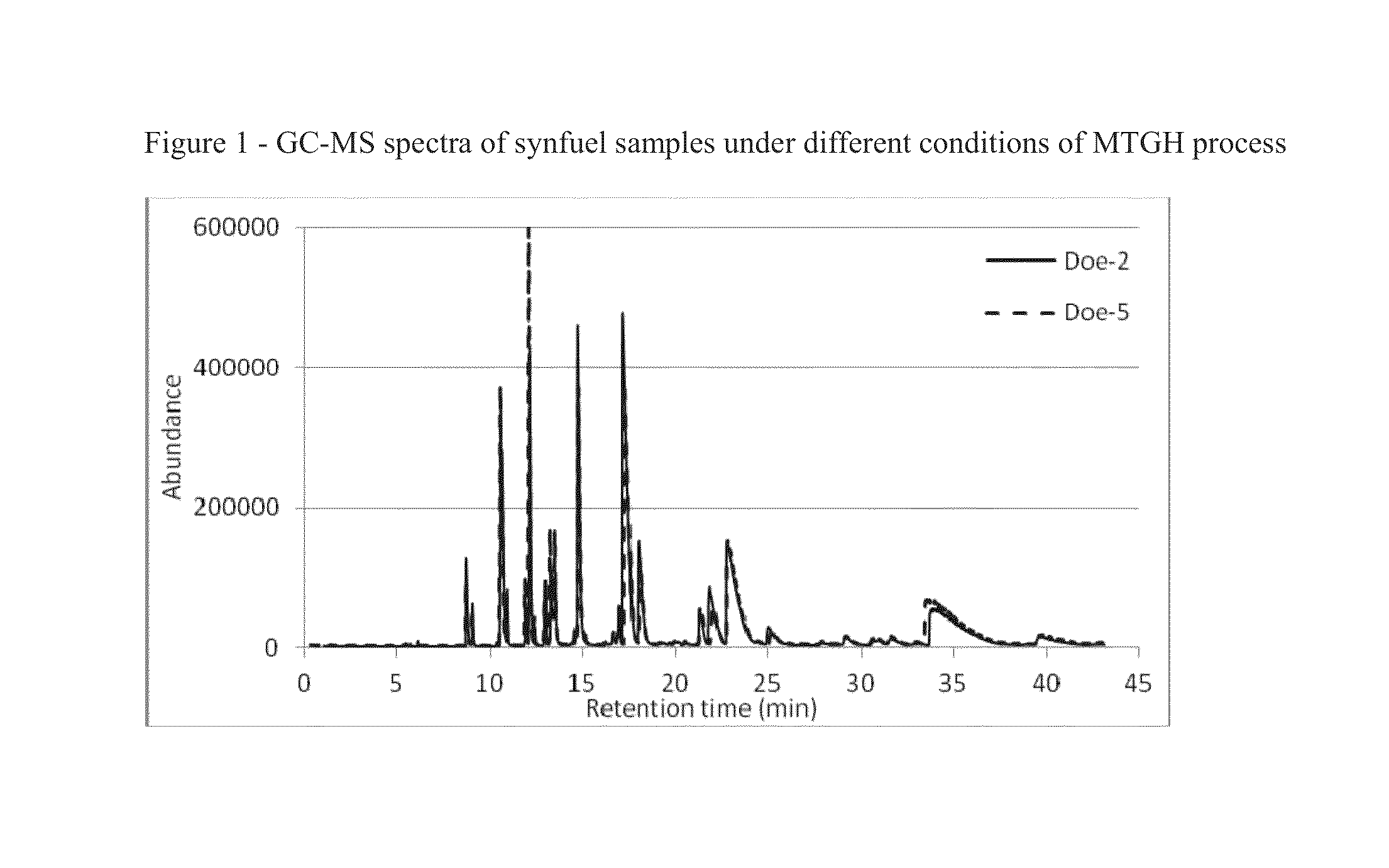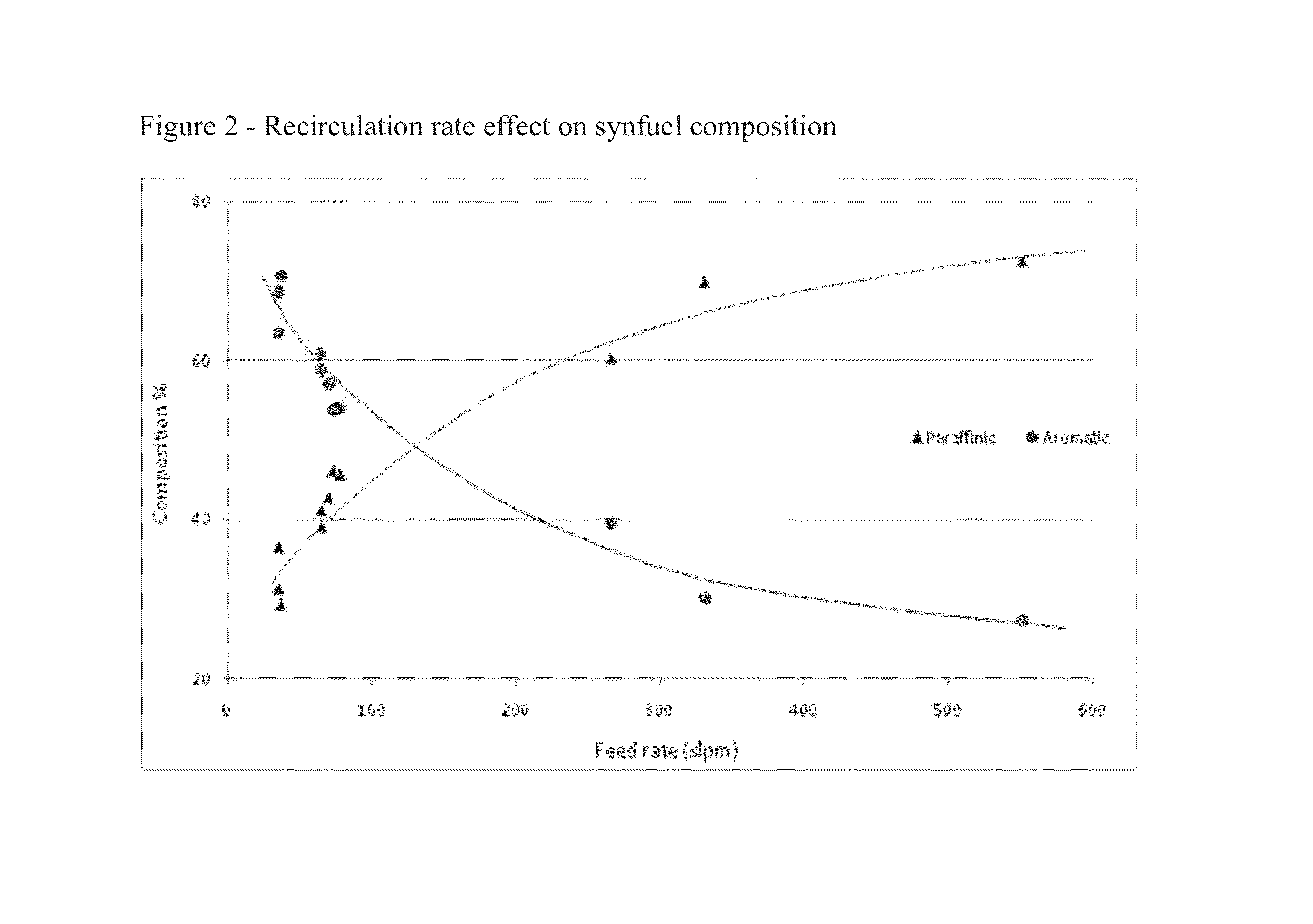Fuel composition
a technology of fuel composition and composition, applied in the field of fuel composition, can solve the problems of high fuel dilution, unsatisfactory soot formation and engine deposit, and high fuel dilution, and achieve the effects of high lubricity, low corrosion, and high stability
- Summary
- Abstract
- Description
- Claims
- Application Information
AI Technical Summary
Benefits of technology
Problems solved by technology
Method used
Image
Examples
example 1
Analysis of Fuel Product
[0017]A fuel was produced by the MTGH process. Quantification of the fuel was determined by both GC-MS and IR techniques. For GC-MS measurement, a fixed volume of 1 μl of the sample is injected into the port and the speciation quantity is characterized by quadruple mass filter. The reproducibility of the syringe is reasonably accurate and the volume fluctuation cannot exceed an uncertainty level more than 5%. The major change for a specific species in the mass count comes from the variation of catalyst used in R4. The relative change between the paraffinic and aromatic portions comes from the feed rate of the syngas during the MTGH process.
[0018]The distribution of the product shows a relatively narrow window containing (1) C4-C7 of both the normal and the branched paraffinic components (such as straight hexane and iso-hexane); (2) C6-C8 of single cyclic ring paraffins (such as methyl cyclohexane and dimethyl cyclopentane); and (3) C7-C10 single phenyl ring w...
example 2
Feed Rate Dependence of the Aromatic to Paraffinic Ratio
[0021]In order to investigate the composition response relative to operation parameters, series of runs with design-of-experiment (DOE) was conducted. A typical comparison between DOE-2 and DOE-5 is shown in FIG. 1. All paraffinic (from C4 to cyclics) and aromatic portions (from toluene to durene) can be summed up to get the aromatic / paraffinic ratio. The feed rate dependence of the aromatic / paraffinic ratio is shown in FIG. 2.
example 3
Physical Characteristics of the MTGH Synfuel
[0022]The synfuel composition can be well controlled by our MTGH system and shows good cold flow properties. Based on CFPP (cold filter plugging point) test, the starting temperature for filter plugging for most biodiesels occurs high, way above −10° C. Such high freezing point in biodiesel excludes its applications as Diesel #1 and jetfuel, even with addition of excessive viscosity depression additives. Another drawback of biodiesel is their poor wear scar data in HFRR (high frequency reciprocating rig) test. This is due to the polar nature of methyl ester towards metal surface as well as some high-affinity hydroxyl impurities containing within biodiesel which tend to decompose to form wearing species at asperity areas. Fatty acids with different degrees of unsaturation can react with metal ion impurities to form metal soap. Although the maximum requirement for the wear scar in D is 520 μm, a trend for tighter limit of 400 μm is proposed....
PUM
| Property | Measurement | Unit |
|---|---|---|
| volume | aaaaa | aaaaa |
| freezing point | aaaaa | aaaaa |
| temperature | aaaaa | aaaaa |
Abstract
Description
Claims
Application Information
 Login to View More
Login to View More - R&D
- Intellectual Property
- Life Sciences
- Materials
- Tech Scout
- Unparalleled Data Quality
- Higher Quality Content
- 60% Fewer Hallucinations
Browse by: Latest US Patents, China's latest patents, Technical Efficacy Thesaurus, Application Domain, Technology Topic, Popular Technical Reports.
© 2025 PatSnap. All rights reserved.Legal|Privacy policy|Modern Slavery Act Transparency Statement|Sitemap|About US| Contact US: help@patsnap.com



